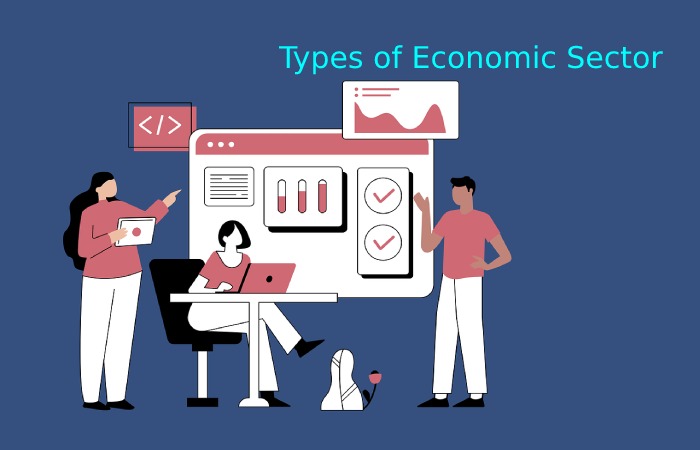A business sector is a labour term that refers to an economic sector or a part of a domestic economy. It considers being one of the four parts of an economy when the economy is measured using an ownership-based system. The business sector includes the part of the economy that functions for profit. It does not have economic factors in private households, government, or organizations that work for a profit.
The business sector is the Segment into which society’s economic and productive activities are divided. It is also identified as the sector of low cost. It consists of three sectors: primary, which involves agriculture, livestock, and extractive secondary, referring to industry and civil construction; and tertiary, which includes trade and services. Other property-based economic sectors include the private sector, the community sector, and the public sector.
Table of Contents
Importance
The Importance of distinguishing the business sector comes because there are significant differences between a company that operates in the primary industry and a company that provides a service. There are also considerable differences between companies within the same sector. For example, a coal mine and a farm area in the primary industry are very different
On the other hand, the business sector defines as large areas or segments into which the economic activities carried out by society are divided. This categorization carries out through three industries, which aggregate companies, businesses, and jobs that are similar in their form of execution and their final purpose.
This way of dividing the economical production of a certain territorial level is advantageous to recognize the socioeconomic profile of that space (which can be a country state municipality) and smooth for the amplification of public policies oriented to the generation of jobs economic. Recovery and development, for example.
Through economic activities, it is possible to identify where the workforce of a territory is assigned and understand the composition of its Gross Domestic Product (GDP) based on production.
There are Three Types of Economic Sector

Primary sector
The primary sector of the economy is a procedure by activities that extract raw materials from nature, thus working with natural resources or direct products.
Productive Branches that make up this Segment:
- farming
- Livestock
- Forestry
- Fishing
- mineral
- plant
- The primary sector comprises agricultural and extractive activities, such as mining and plant extraction.
Secondary Sector
The secondary sector of the economy totals the activity of productions from very different fields. It is complete with industrial activities. Most of the businesses that make up this Section use raw materials provided by the primary sector. Also, the secondary includes consumer goods, production of essential goods, and extractive industries.
Secondary Sector Production in the Following Areas:
- Automotive, naval and aeronautical
- Metallurgy and iron and steel
- Textiles
- food and drinks
- Paper and cellulose
- wood and furniture
- chemical and petrochemical
- Machinery
- Civil construction
- Electronic and computer equipment
- Third sector
The tertiary sector of the economy is what brings together all activities related to services provided by companies and individuals and trade. This Segment is much broader than the two described above and encompasses the most diverse types of specialists, whether they are formal service providers or informal workers.
We can mention professors, researchers, lawyers, merchants, mechanics, travel and tourism agents, sellers, assistants, drivers, waiters, telemarketing assistants, developers, entertainment and culture professionals, and many others who provide some service. To a direct consumer. Depending on the ownership of the company
Business Example
A company is an association of people and capitals that pursue to achieve an economic benefit with the development of a particular activity. This is also a productive unit can have one or more people and usually seeks profit and completes a series of objectives set in its formation.
Finally, depending on the request of the company, as well as its actions, we can classify companies into three categories:
Public
Companies in which part of its shareholding, total or majority, owns the State. Companies such as PEMEX in Mexico or RENFE in Spain are examples of public companies.
Private
Those companies in which the entrepreneur or private investors own a large part of the shareholding. In this sense, any company that is not public—companies such as Banco Santander in Spain, Mexico or any other company that the State does not own.
Mixed
A type of mixed company in which its capital comes, in addition to private investors, from the State. Companies such as Red Electrical in Spain or Empress Electric are clear examples of joint ventures.
Conclusion
The productive fabric that is part of the economy comprises countless companies. Despite calling themselves such, they have many differences between them. For this reason, in addition to knowing what a company is, it is interesting to know how they are classified and what type of companies make up each Segment.
